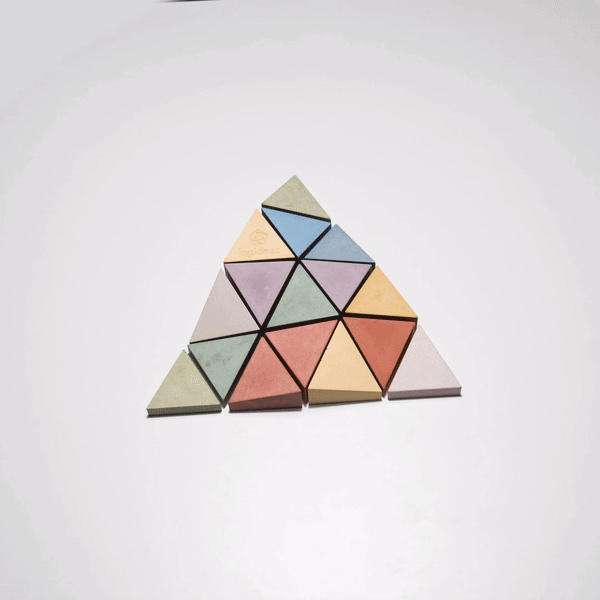Who invented the game?

Planbureau
The game was invented by http://www.planbureau.hu/ and is developed and produced by Logideez
It won design prizes: Hungarian Design Award 2013 Winner
This is the website of the game: https://logifaces.com/
What Planbureau writes about the game
LOGIFACES can be arranged in millions of variations. It allows your imagination to reign free to find endless patterns in its computer-generated forms, while complex geometries become comprehensible, in a real, non-virtual space under your hands.
LOGIFACES lets you train your mind, boost your creativity and challenge yourself and your friends. The 16-piece set contains 11 different types of prisms, each of them identifiable by the height of their three vertices. These heights can be 1, 2 or 3 units.
What is Logifaces?
The Logifaces tool is a geometric skill development game. It was created by Daniel Lakos, a Hungarian born architect and designer, assistant professor at Moholy-Nagy University, Budapest (MOME).
Logifaces received the Hungarian Design Award and was the finalist of a game design competition juried by Prof. Ernő Rubik, the world famous inventor of the Magic cube.
The Logifaces set is made up of 16 truncated prism blocks. The 16 pieces contain 11 different types of prisms, each of them identifiable by the height of their three vertices. These heights can be 1, 2 or 3 units.
The rule of the game is to build a continuous surface using up all blocks without leaving any gaps or breaks between them. The most common solution is a big triangle, but there are practically endless variations of the game - and anyone can come up with new ones.
Jumping into Space and educational purposes
Logifaces is one of the first puzzles jumping from the ordinary two-dimensional plane to the three-dimensional space. The puzzle is two-dimensional, but the solution is in three-dimensions. The tool offers a nearly infinite logical complexity, complicated mathematical and geometrical problems.
Logifaces offers many ways for educational use. How is Logifaces applicable in the school?
Math curriculum
- Switching between dimensions (plain and volume)
- Combinatorics (the different heights of the vertices determine the number of differently shaped blocks)
- Algebra (analyzing the number of vertices representing the different units, building a strategy to solve the basic equilateral triangle shape)
- Figurate numbers (demonstrating the relation of square and triangular numbers)
- Spatial geometry (demonstration of the distortion of the regular triangle based prism to truncated surfaces eg. similar, symmetrical, irregular triangles)
- Tessellation in a special three-dimensional way
- Graph theory
- Analyzing the light-shadow effect on the different angles and slopes
Science Curriculum
- Chemical bounds
- Biologically active molecules
- Crystalline structures
Information Technology
- Polygonal modeling
- Network science
Art and Crafting
- Design thinking (design inspired by spatial triangles, prism blocks, relationship of the virtual and the real world etc.)
- Relief structures, light and shadow effect, basic figurative forms
Developing social skills
- Problem solving skills
- Cooperation skills in peer learning
- Inclusive (e.g. shared activity with visually impaired)
- Non-verbal communicational skills